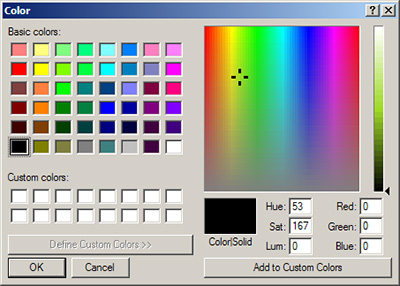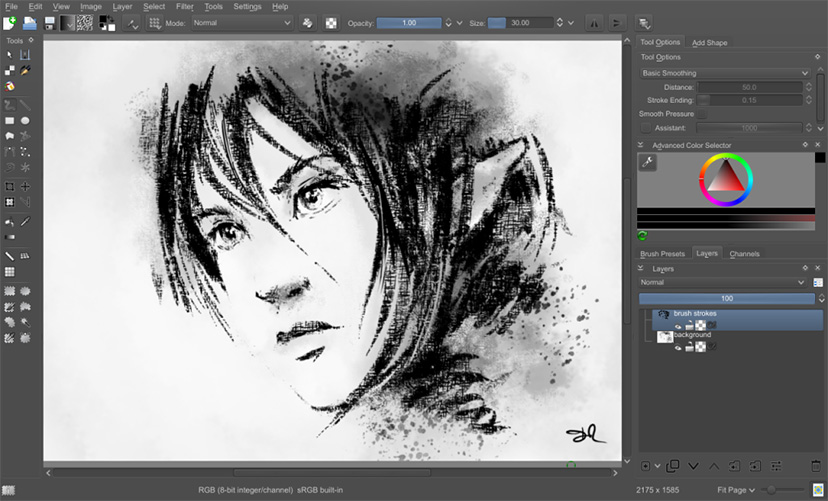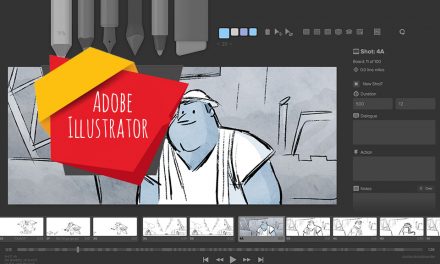Each artist has its own and unique technique when creating the illustration or art and that is completely fine. Also, there is no perfect technique neither exists a perfect process for creating the illustration. However, one thing is crucial for being a good artists and that is consistency, as you must stay consistent to your style and build it. Still, when speaking about art, there are some tips that you can follow, regardless of whether you work on the illustration or something else. Natsuki Otani, one of the best and most prominent illustrators, explains how much the tips from experienced colleagues mean and how they help you. You can check Natsuki Otani’s website to see those works!
Define the color set
 Before you starting working on details, you must decide and outline the collection of colors that you will work with. This means you must determine the base/primary colors and the secondary line of colors so you could know how to paint. However, many people forget the shadows and shading, and these are highly important in illustrating. The stroke color and the thickness is something that you must work on and therefore these are the key for the good illustration. Try to define the palette of colors you will use and that will make your illustration much better. The worst thing is to start working on it without prior determining of the color arsenal.
Before you starting working on details, you must decide and outline the collection of colors that you will work with. This means you must determine the base/primary colors and the secondary line of colors so you could know how to paint. However, many people forget the shadows and shading, and these are highly important in illustrating. The stroke color and the thickness is something that you must work on and therefore these are the key for the good illustration. Try to define the palette of colors you will use and that will make your illustration much better. The worst thing is to start working on it without prior determining of the color arsenal.
Choose the outcome
Doing a portrait is different from packaging is different from product design. This article is mostly about portraits, but the same principles apply equally to product design. I recently designed several pairs of compression socks for women and learned firsthand that the same design principles used on canvas can be used with fabrics. Compression socks are especially difficult because they use special yarn to compress the legs. At least that’s what I thought at first. Then when I got into the project, I realized the manufacturer of these compression socks was able to use several techniques to duplicate my exact designs in fabric form. The eventually compression socks that came off the press looked exactly like the picture on my computer. So whether you’re designing compression socks or t-shirts or self-portraits, use the same design fundamentals.
Shades are the inevitable part
This is far from an easy task but it is something that simply fulfills your work and gives it more feeling. The general rule for shadings is that it must be in darker color than rest of your work to create the feeling of depth. Now, this continues on the previous part we talked about – the stroke – as it must match the stroking color in order to create a harmony and consistency. This is especially important in web design as you will often have to match the pages, outlines, forms and the banners on the page. One of the best examples of the good shades are presented in Natsuki Otani illustration | hideaway love.
Shortcuts are must
 Like in work, especially the one that involves working with software and digital art, you must learn the shortcuts. Honestly, there is no point just sitting, reading and trying to remember these as it is not the process you can learn like that. Instead, find the ones that you would need most of the time, write down the combinations and use them all the time. After some time, you will simply remember them by the repetition model and they will become the daily part of your work. You can even customize the shortcuts and adjust these to your needs, so consider the customization.
Like in work, especially the one that involves working with software and digital art, you must learn the shortcuts. Honestly, there is no point just sitting, reading and trying to remember these as it is not the process you can learn like that. Instead, find the ones that you would need most of the time, write down the combinations and use them all the time. After some time, you will simply remember them by the repetition model and they will become the daily part of your work. You can even customize the shortcuts and adjust these to your needs, so consider the customization.
See Natsuki’s other commercial work here:
- Best Compression Socks for the Elderly https://comprogear.com/best-compression-socks-for-elderly/
- Footless Compression Stockings https://comprogear.com/footless-compression-stockings/



 This site is the complete work of an experienced illustrator by name Natsuki Otani. “A record of my journeys, both physical and imagined” is his latest illustrated book where he explained his journey from the beginnings, to the point where he can accept and reject the offers. The book will also be presented in the upcoming Secret Hideaway en 2019 exhibition. The book will cost a fair price at the exhibition but will be free to download after this event.
This site is the complete work of an experienced illustrator by name Natsuki Otani. “A record of my journeys, both physical and imagined” is his latest illustrated book where he explained his journey from the beginnings, to the point where he can accept and reject the offers. The book will also be presented in the upcoming Secret Hideaway en 2019 exhibition. The book will cost a fair price at the exhibition but will be free to download after this event.